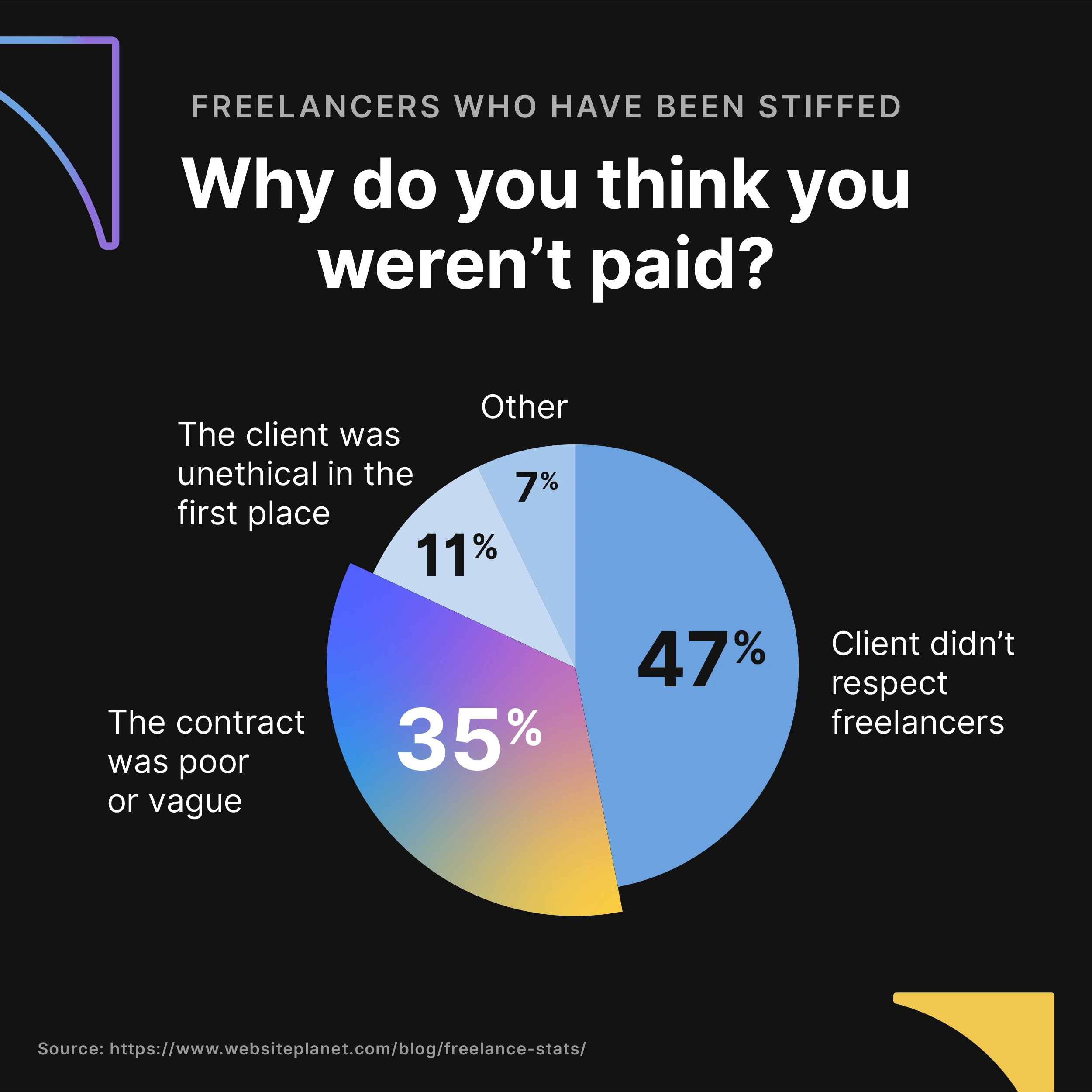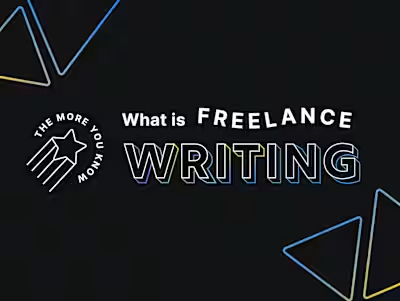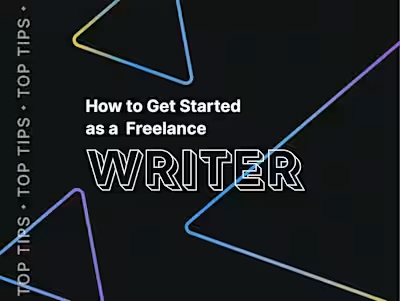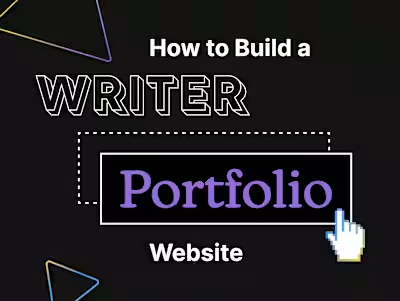Use This Checklist Before Sending a Freelance Writer Agreement

So you followed our four steps to getting started as an independent writer?
You’re crushing it!
And you even went ahead and established your digital identity with a writer portfolio website using our guide?
No wonder you have a client who’s interested in working with you!
Now you’ve got just one last hurdle to clear before you can start jamming on your exciting new client project — and it’s a doozy.
You need an air-tight freelance writer agreement.
So we’re gonna help you create one.
Keep reading to learn exactly why you should get the details of your project down on (digital) paper as well as how to develop a strong freelance writer agreement with the help of our comprehensive checklist.
Why Solid Freelance Writer Agreements Are Key to Great Projects and Relationships
A contract is one of the best tools independent workers have to facilitate a smooth working relationship between themselves and clients they might never meet in person.
And having a delightful first experience is the best way to ensure you’ll get to have even more delightful experiences with clients in the future.
Here are several reasons why contracts set up both you and your clients for success when embarking on a project together.
Get Everyone on the Same Page
One of the most important things a freelance writer agreement can do is verify that you and your client are clear on the main details of the project at hand — its timeline and goal(s), what tasks and deliverables it will include, what it won’t include, and so on.
Clarify Your Compensation
Another very important job for contracts is clarifying everything around compensation. While the amount of payment is of course key, a freelance writer agreement should also cover things like the expected payment schedule, how you’ll handle any additional fees, and so on.
While a contract doesn’t guarantee a delinquent client will pay without you needing to take legal action, seasoned freelancers say it does help avoid non-payment situations.
Answer Often-Overlooked Questions About Ownership, Usage, and More
At the beginning of a new client relationship, it can be easy to get so excited about moving forward that you forget to define the little things that will become much bigger things by the end of the project.
We’re talking about answering questions like: Who will be credited for the final project (will your name be on it, or will you be considered a ghostwriter)? Who owns the finished content? If you give up complete ownership, when and how are you allowed to use it?
Offer a Way Out for Both Parties
Something that you don’t want to decide in the heat of the moment is exactly what’s supposed to happen if the project needs to be cut short in the case of an emergency, non-payment, or another impasse. Including even a boilerplate clause that addresses this concern in all your contracts will help put both parties at ease when the unexpected happens.
Set the Tone
On a less tangible note, a freelancer writer agreement helps set a certain tone for client relationships. A strong contract conveys that you’re an experienced professional who demands respect — and is also ready to give it to clients who are willing to let you lead in your area of expertise.
A Bonus for Clients: Guarantee Original Work
It’s easy to think that a freelance writer agreement is only meant to protect the independent worker.
However, a big benefit for clients is a contract that guarantees they’ll receive original work. Help close client deals and build strong relationships with contracts that guarantee clients won’t receive any plagiarized, re-used, or otherwise un-original work.

Now, with all the reasons that contracts are important in mind, it’s time to work through the following checklist to develop and send an iron-clad freelance writer agreement.
The Ultimate Freelance Writer Agreement Checklist
From what to include to how to get it signed and your project started, here’s everything you need to know about creating a brilliant freelance writer agreement that you can use again and again.
Templates to Check Out
Every independent worker knows the power of a template or example to get the creative juices flowing.
So before we actually dive into all the must-have clauses, we thought you should check out some contract templates to either choose one to customize or get an idea of what a contract should look like if you want to build one from scratch.
Freelance writer Jyssica Schwartz shares a link to her Google Doc-based contract here
Rocket Lawyer provides a freelance writer agreement template that you can customize and download or even get signed online
Docracy, a crowdsourced platform for legal documents, has a simple freelance writer agreement you can also customize and send using their system or simply download and use as you please.
Clauses to Include in Your Freelance Writer Agreement
Alright, now that you’ve chosen a template or know what you want your freelance writer agreement to look like, it’s time to think about all the language you want to include to ensure you and your client are protected on every project.
Here’s what we recommend:
Your scope of work statement should clearly describe the project and its goals. Your aim in this section is to set clear boundaries for the project so that you and your client both know which changes will impact the timeline and/or budget.
Speaking of a timeline, when it comes to finite projects, it’s a good idea to note a final due date as well as any milestones — or deliverables, which we’ll discuss next — you plan to hit along the way. Keep in mind this timeline is very likely to flex over the course of the project.
Describe the deliverables — which are the elements you’ll be delivering to the client over the course of the project. For independent writers, these may include things like notes, revised drafts, etc. If this is the kind of project that will require any resources from the client, feel free to detail those out in your deliverables clause as well.
Let’s talk payment. While of course you want to lay out the full cost of the project, you should also seriously consider building in a payment plan (this article we created for independent designers has a few examples of installment plans) as well as the details of how you bill (flat rate, hourly, etc.) and how you prefer to receive payment (direct deposit, digital payment app, etc.). This is also the time to mention the penalties (like an additional percentage of the total) for payments that are late or don’t go through.
Most freelance writers are happy to work through a few rounds of content revisions with clients — it’s just part of the workflow. However, you should define what these revisions look like before you’re stuck rewriting the same piece of work 10 times with no additional compensation.
On the topic of additional compensation, be sure to include add-on services in your contract so that clients know what else you can do for them.
It’s important to define ownership when it comes to each writing project. Does the client own the final work? If they do, do you still have a right to use it for promotional purposes? And if you still own it, can you reuse it for another client or is it exclusive to their organization? It’s wise to outline the rules now before legality concerns arise, and this article should help you understand your options.
While it’s quite common for independent writers to be hired as ghostwriters, you still want to outline the rules of attribution in your contract to make sure you don’t miss out on any credit you were expected for a job well done.
The “kill fee” is your price to allow the client the terminate the contract before it’s run its course. You can include this fee and/or a force majeure clause that allows either party out of the contract penalty-free in the case of an unpreventable surprise.
Our final tip is to include some kind of authenticity statement that promises the client that the content you provide is created by you (only if you don’t plan to hire subcontractors, of course), is original and unique, and hasn’t been plagiarized.

Options for Sending Your Freelance Writer Agreement to Clients
Now for one of the most thrilling steps of the freelance writer agreement checklist — getting ready to send your precious new contract!
Thankfully, this last one is also a decently easy step.
What you’re doing here is determining whether you want to send a PDF version of your contract to your client or if you want to step it up a notch by using an electronic signature platform.
If you go the digital platform route, which we recommend, you should choose and create an account with a recognized provider that can offer a high degree of security as well as features that can get your freelance writer agreements signed faster.
A Google search or a visit to one of the top software review sites — like Capterra — will help you identify your best options.
Your Future as a Freelance Writer is All in Front of You
Creating a digital identity as a skilled and professional independent writer is more important than ever in a world and workforce that’s going digital.
And while having a beautiful freelance writer agreement at the ready is certainly a part of that identity, it isn’t all of it.
If you haven’t yet completed your profile on Contra — the modern platform where independent professionals can create profiles that highlight the work they’ve done and the community they’ve developed — signing up and getting started only takes seconds.

Contra makes it easy to build out a profile featuring your favorite writing projects, your favorite collaborators on those projects, and of course your services and rates.
It’s not LinkedIn. It’s definitely not a resume. It’s Contra — the future of freelance and independent work.
Like this project
Posted Apr 9, 2021
Likes
0
Views
195




